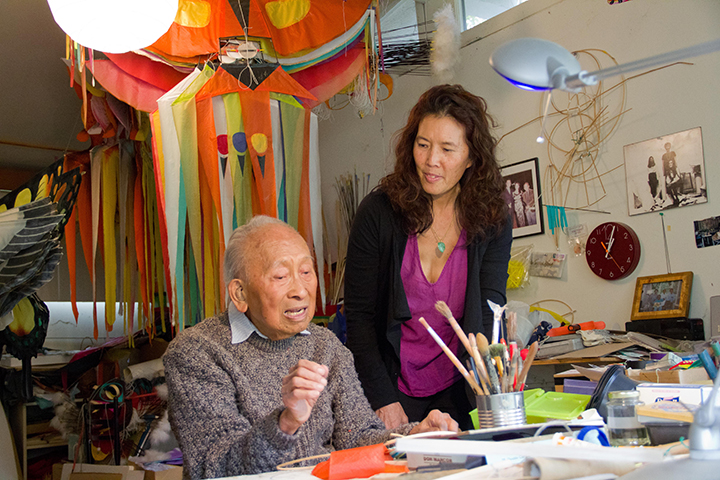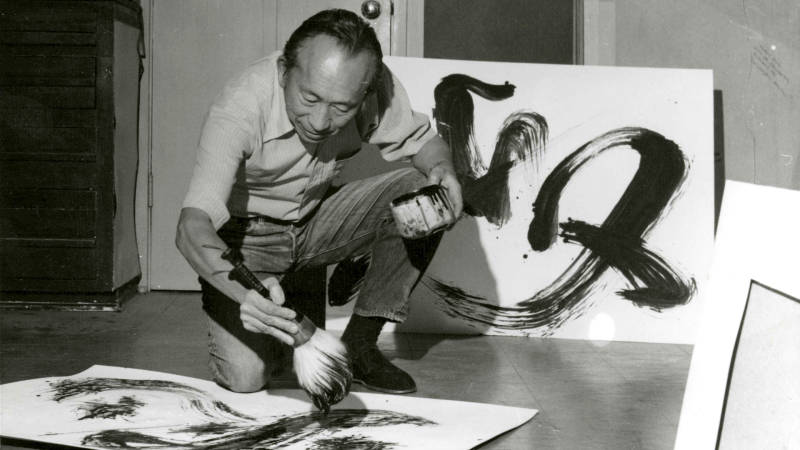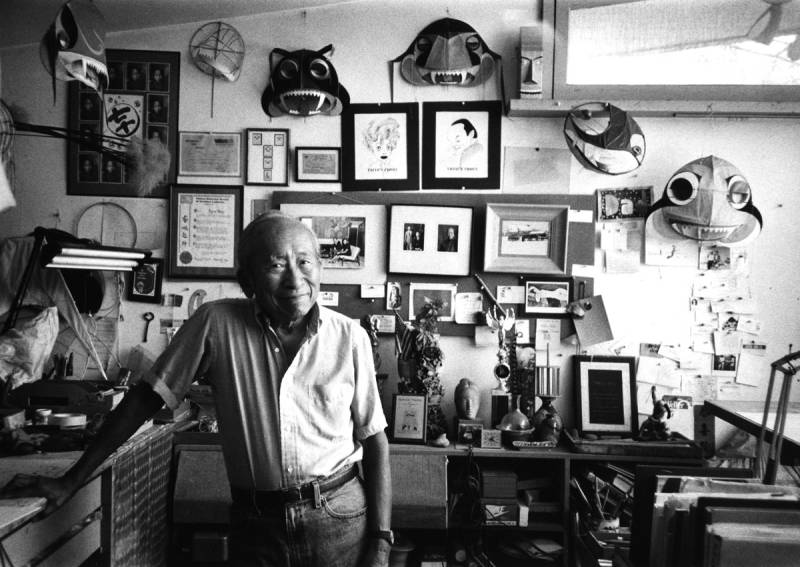In 1919 at the age of 9, the artist Tyrus (Gen Yo) Wong arrived on Angel Island from his village in China. As he matter of factly states in Tyrus, Pamela Tom’s new documentary about his life, “I never saw my mother again.”
It’s fitting, then, that Wong would later work on the Disney animated film Bambi (1942). When the Great Prince of the Forest stoically tells the young buck, “Your mother can’t be with you anymore,” it’s not too much of a leap to see how Wong’s personal history informs the emotional landscape of Bambi’s woodlands. Tyrus, the opening night film at this year’s CAAMFest, honors the life and work of the now 105-year-old painter, calligrapher, illustrator and inventor. (Editor’s note: Wong passed away Dec. 30, 2016, at the age of 106.)
Tom’s interest in Wong began almost 20 years ago when she first watched Bambi with her daughter. During the “making of” documentary at the end of the film, one of the animators made a reference to a Chinese-American artist who was instrumental to the look of the movie. Tom says, “Immediately, my radar went up. Chinese artist, 1930s Disney. I need to find out who this person is, so I tracked him down.” At the end of their first meeting, she’d not only learned about his decades of work as a painter but his career working on Hollywood films like Rebel Without A Cause. She thought, “Okay, I need to make a film about you.”

Shortly thereafter, she started filming interviews with the then 90-year-old artist. With years of archived material, Tom had to find a way to shape Wong’s struggle to become an artist. For the story she wanted to tell, Tom says, “I felt that it was important for me not just to talk about his art but his experience as a Chinese-American immigrant in this country.” His emigration took place during the era of the Chinese Exclusion Act, a statue passed by Congress in 1882 that largely suspended Chinese immigration and excluded them from becoming citizens. The act remained in place until 1943.
Wong entered the United States by becoming a “paper son.” “When the 1906 fire in San Francisco burned all the immigration papers,” Tom says, “a lot of the Chinese immigrants were able to claim that they had these sons that didn’t exist. They sold these papers, and you could purchase them, and you could become a paper son. You entered the country under this false identity. You were pretending to be somebody else.”




